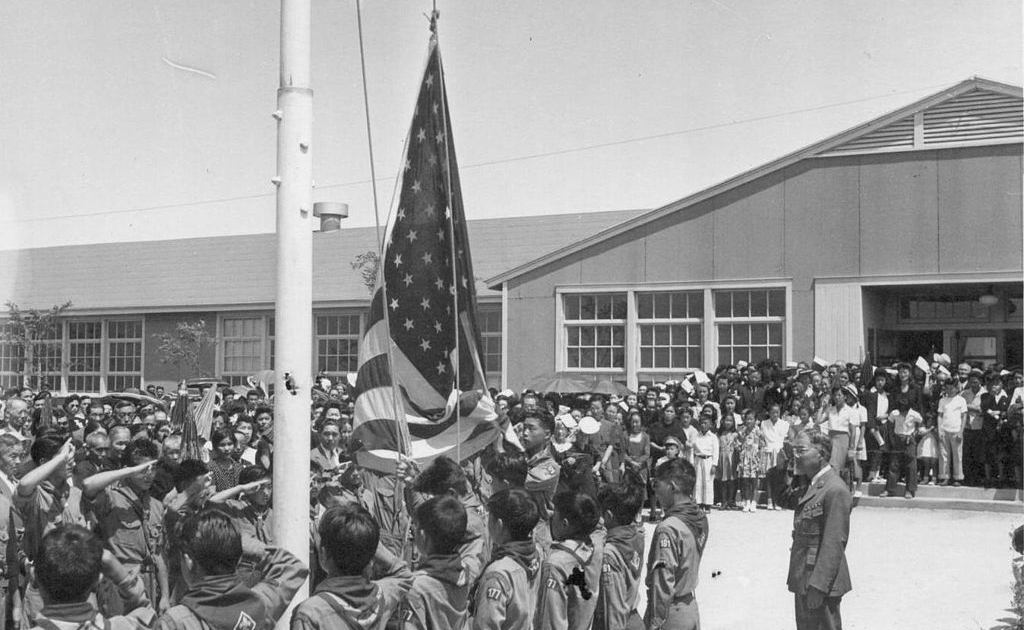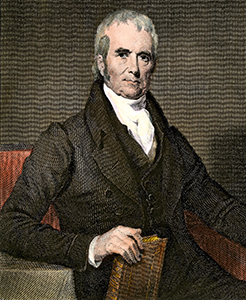Pop Civ 8: Korematsu v. United States
Orders for removal of Japanese Americans from an Exclusion Zone. Courtesy National Archives.
Introduction
In recognition of Asian American and Pacific Islander Heritage Month, we’re exploring one of the most infamous cases in Supreme Court history, Korematsu v. United States. While we often celebrate the Supreme Court for helping our nation evolve into a more equitable place for all its citizens, this decision is now regarded as a significant ethical and judicial misstep by contemporary scholars.
Japanese Americans in World War II
In the early morning of December 7, 1941, Japanese forces executed a surprise military strike on the United States Naval Base at Pearl Harbor in Honolulu, HI. The unprovoked attack precipitated U.S. entry into World War II, and suddenly Americans found themselves at war with Japan, the Nazis, and other Axis forces.
Following the attack on Pearl Harbor, both the military and government ramped up their rhetoric about the perceived danger from Americans with Japanese ancestry living within the United States. In what was seen as an effort to combat that threat, President Franklin D.Roosevelt signed Executive Order 9066 on February 19, 1942, authorizing the forced removal of Japanese Americans from certain areas of the country. Massive portions of the western United States were designated as exclusion zones, and more than 120,000 Americans of Japanese ancestry were ordered to relocate to incarceration camps around the nation.
Fred Korematsu, second from right, with his family in their flower nursery.
One of those Japanese Americans was Fred Korematsu, a 23-year-old Oakland, CA, native, and member of the Nisei community, meaning a second-generation Japanese American. Fred was born to Kakusaburo Korematsu and Kotsui Aoki who immigrated from Japan in 1905. After his education in Oakland public schools, Korematsu worked in his family’s flower nursery and later as a welder but faced discrimination in the latter role because of his Japanese ancestry.
In 1942, Japanese Americans in Oakland were ordered to report to Assembly Centers no later than May 9 for relocation to incarceration camps. Rather than obey those directives, Korematsu went into hiding; he was arrested a few weeks later for violating military orders. While imprisoned in San Francisco, Korematsu was approached by the American Civil Liberties Union about using his case to test the legality of the forced removal of Japanese Americans from their homes and communities.
Korematsu agreed and was assigned civil rights attorney Wayne M. Collins. His case was heard in federal court in September of 1942, where he was convicted of violating Public Law No. 503, which criminalized violations of military orders issued under Executive Order 9066. Korematsu was sentenced to five years probation and was eventually placed in the Central Utah War Relocation Center in Topaz, UT.
A view of Topaz Relocation Center, where Korematsu and his family were incarcerated. Courtesy U.S. National Archives and Records Administration.
Korematsu filed for appeal, and the U.S. Court of Appeals reviewed his case in March of 1943. To Fred’s dismay, the original verdict was upheld Janary 7,1944. Undeterred, Korematsu appealed to have his case heard by the Supreme Court.
In December of 1944, the Court granted a writ of certiorari, asking the lower courts to send up the record of the Korematsu case for review. In this appeal, Korematsu argued that the order to relocate violated his Fifth Amendment rights to due process under the Constitution. After its review, the Court under Chief Justice Harlan F. Stone decided 6-3 to affirm the lower courts’ findings. Writing for the majority, Associate Justice Hugo Black asserted that:
“Korematsu was not excluded from the Military Area because of hostility to him or his race. He was excluded because we are at war with the Japanese Empire, because the properly constituted military authorities feared an invasion of our West Coast and felt constrained to take proper security measures, because they decided that the military urgency of the situation demanded that all citizens of Japanese ancestry be segregated from the West Coast temporarily, and, finally, because Congress, reposing its confidence in this time of war in our military leaders—as inevitably it must—determined that they should have the power to do just this.”
The majority opinion, joined by Associate Justices Stanley F. Reed, Felix Frankfurter, William O. Douglas, and Wiley B. Rutledge, was clear in its deference to military and congressional authorities, and expressed its unwillingness to defy those positions while the nation was engaged in all-out war. Associate Justices Owen Roberts, Frank Murphy, Robert H. Jackson all dissented, with Justices Roberts and Murphy in particular concerned about the inherent racism of the exclusion orders. Both also cited the fact that Korematsu was in no way suspected of disloyalty to the United States; rather it was the simple fact of his ancestry that required him to abide by relocation orders. In the end, with the Korematsu decision the Court upheld the legality of exclusion orders based on a citizen’s ethnic background.
The same day that the Korematsu v. United States decision was handed down, another case involving Japanese incarceration was decided by the Courts. In Ex parte Mitsuye Endo, the Court decided unanimously that the government and its War Relocation Authority could not detain a citizen who was “concededly loyal” to the United States. But how did this decision square with the verdict in the Korematsu case? Justice Roberts argued that the Endo decision dealt only with the actions of the War Relocation Authority, while Korematsu only focused on the exclusion of Japanese Americans, not their relocation. Both Endo and Korematsu were efforts by the Court limit the power they had ceded to the military in a case from the previous year, Hirabayashi v. United States, where they had decided in favor of the U.S. government’s ability to force a certain group of people to abide by a curfew during a period of war.
The Roosevelt Administration, having been made aware that these two decisions were being handed down by the Court, issued Public Proclamation No. 21 the day before the cases were decided. That Proclamation revoked the exclusion orders and paved the way for Japanese Americans to return to the western United States by 1945.
Boy Scouts at the Granada War Relocation Center in Colorado raise the flag to half-mast during a memorial service for the first six Nisei soldiers from this Center who were killed in action in Italy.
Japanese American Incarceration
Cultural Depictions of Japanese Incarceration
Farewell to Manzanar
In 1973, Jeanne Wakatsuki (along with her husband James Houston) published an account of her experience as a seven year old whose Japanese American family was relocated to an incarceration camp during World War II. The memoir gained instant acclaim and was quickly adopted as an essential text in K-12 schools and universities. The narrative explores Wakatsuki’s early life in San Francisco, and follows her family’s forced relocation to Manzanar, an incarceration camp where more than 120,000 Japanese Americans were imprisoned.
Part of the appeal of Farewell to Manzanar was the the story was being told from the perspective of a young child; while many adult accounts of the incarceration of Japanese Americans had been shared following World War II, Wakatsuki’s fresh perspective engaged young readers and helped humanize the harrowing experience for others.
In 1976, a film version of the memoir was released by Korty Films, with a screenplay written by Wakatsuki and her husband. In addition to Nobu McCarthy and Dori Takeshita, who play older and younger versions of Wakasuki, respectively, Pat Morita (of Karate Kid fame) is featured as a photographer young Jeanne encounters at Manzanar.
A still shot from the 1976 film, A Farewell to Manzanar.














